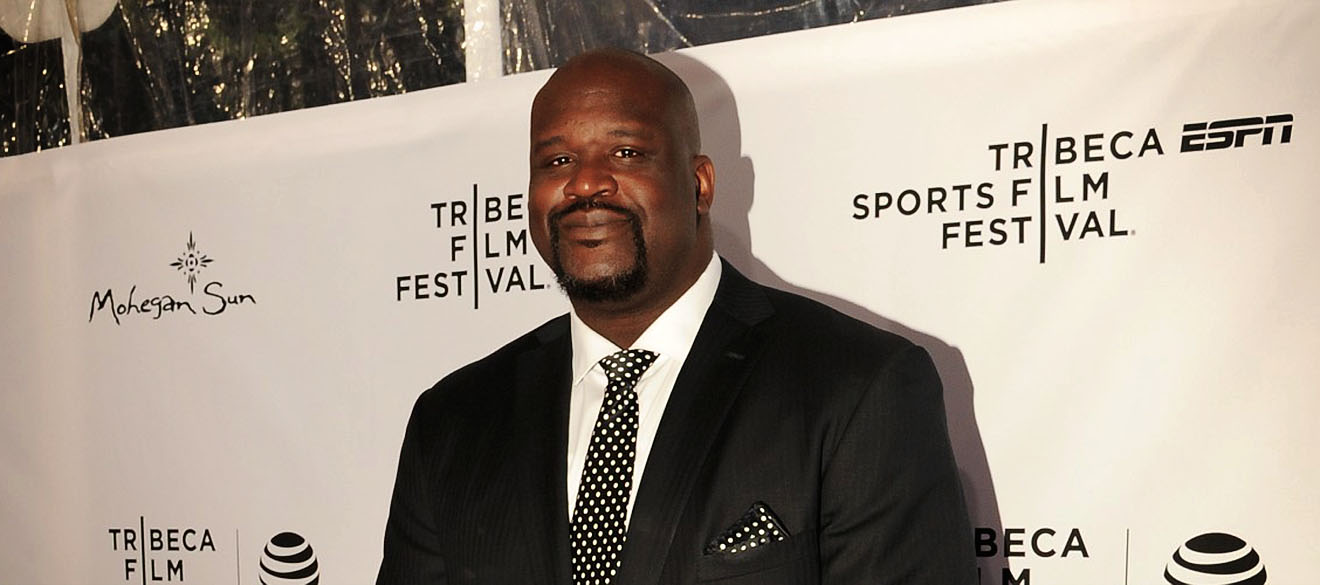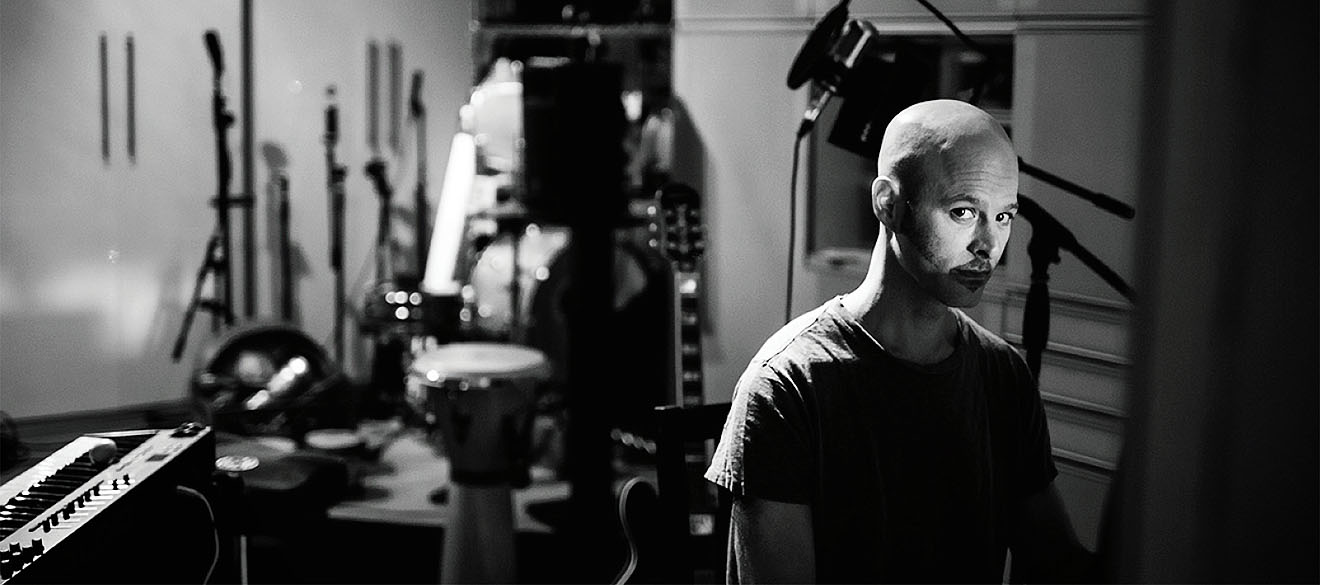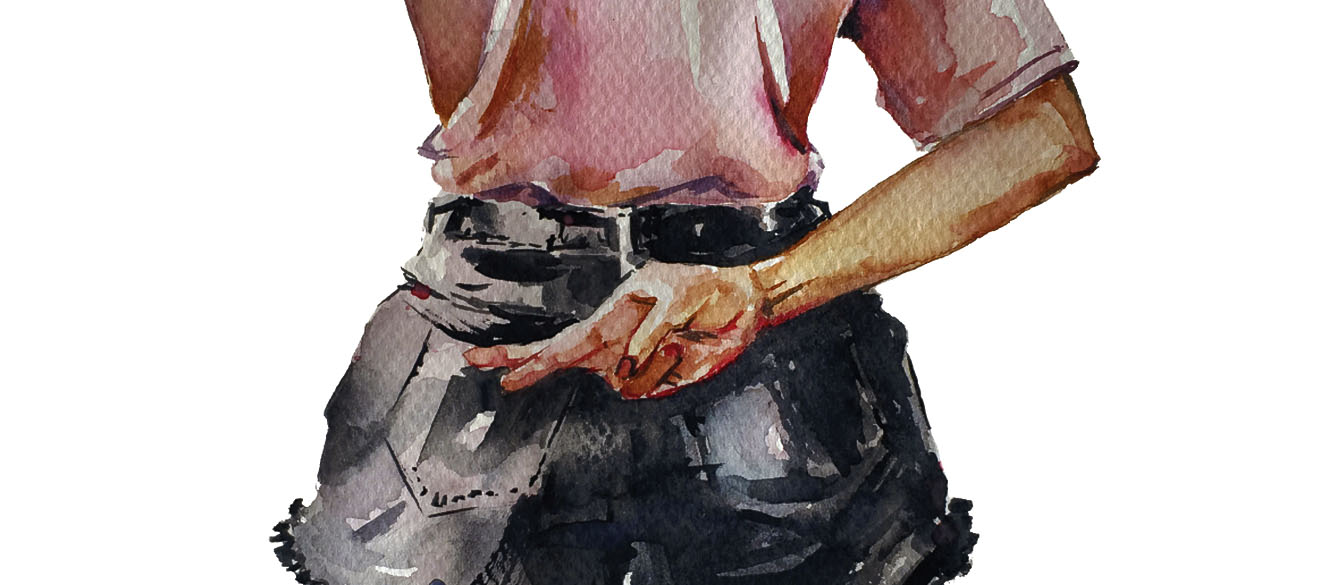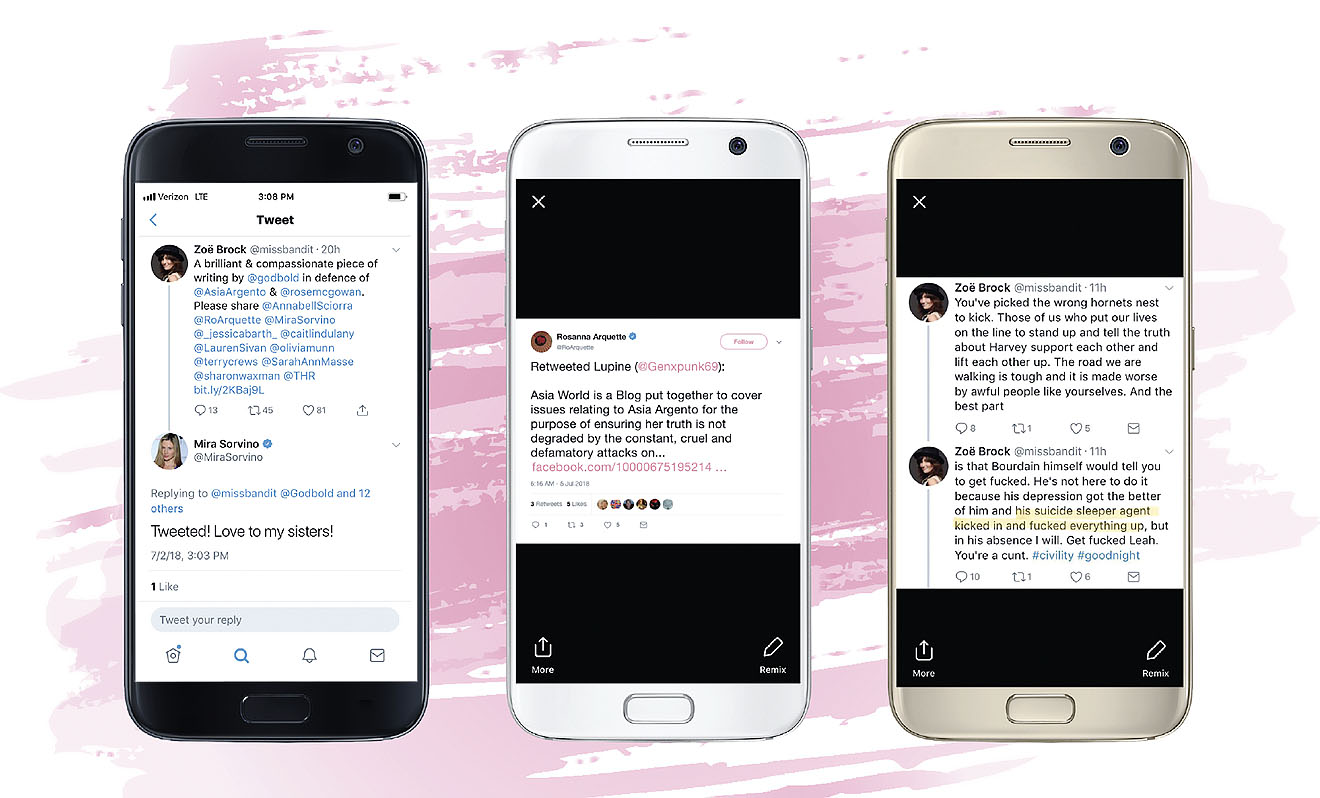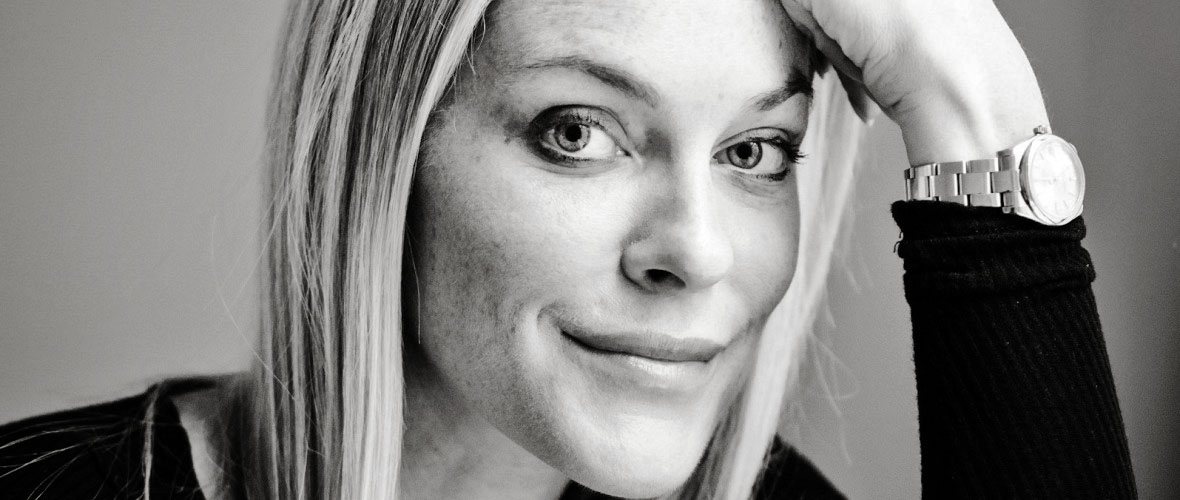The musician Matt Pike shouldn’t require an introduction. The world is a little fucked up, though — as he’ll be the first to tell you — and the virtuosos who walk among us usually don’t get their due until it’s too late and they’re already six feet under. Pike deserves better, and anyone who knows the difference between a blast-beat and break-beat would agree that the metal maestro should be a household name by now.
But for those who have never carved an anarchy symbol into a desk, Pike is essentially your favorite headbanger’s favorite headbanger, a guitar guru if there ever was one. As a founding member of both Sleep and High on Fire, the 46-year-old has spent the last quarter-century eviscerating eardrums and unleashing riffs that have shaped the contours of contemporary metal. Without him, “stoner metal” wouldn’t have a Wikipedia page, and thrash might never have had a twenty-first century renaissance.
Both Bay-area bands, despite their stark differences, have cultish followings, and the legacy surrounding their music has been passed from dorm room to dorm room, record shop to record shop, over the years, making Pike something like the Alejandro Jodorowsky of the fretboard. After all, taking a cue from the title of Jodorowsky’s trippiest film, Sleep named its second album Holy Mountain (1992), and the creation story of Dopesmoker — the trio’s infamous hour-long song/album about a cosmic caravan of “Weedians” sludging through a “riff-filled land” on the way to Nazareth — has developed the type of feverish mythology usually reserved for midnight movies or conversations about Elvis’s current whereabouts.
Pike’s most recent trip around the sun might elevate his status outside the metal underground, though. 2018 has seen Sleep awaken from a mighty hibernation with the release of The Sciences, the group’s critically acclaimed fourth full-length and its first since Dopesmoker. (Naturally, the album dropped on 4/20, courtesy of Jack White’s Third Man Records.) And this month, High on Fire will release Electric Messiah, the band’s eighth LP and its best in years. Packed with the types of speed anthems that should soundtrack a bank robbery or coup, Pike believes the record has the potential to swell the group’s audience to its rightful size. “This album’s definitely got the material to do it,” he told Penthouse over two long and epic interviews as he was wrapping a set of High on Fire shows in Las Vegas this past summer.
Sleep might be compared to Black Sabbath (if drowned in cough syrup), and, as frontman of High on Fire, Pike is regularly described as the American Lemmy Kilmister. But, in reality, the metal lord has carved his own path and sounds like nothing other than Matt Pike. If the guy doesn’t receive some sort of monument during his lifetime, then maybe he’s right that humanity is truly on a “spiritual downward spiral.”
At the very least, we promise to make our children listen to Dopesmoker. This generation might not recognize him as a living guitar god, but the next will.
Hey Matt, how’s Las Vegas treating ya?
I’m the mayor of fucking crazytown, so I’m busy as fuck.
Keeping up with your mayoral responsibilities. Are you partying?
Maybe just a little. It’s more that I’m trying to schedule and manage everything… but I like to gamble, play games, and stuff like that. Plus, I’m with my girlfriend Alyssa Maucere, who I haven’t seen in quite a while. We’ve been together for two and a half years, and live together [in Oregon]. She’s kind of my life partner. She’s amazing. She’s not only a tattoo artist, a poster artist, and a musician, but her band Eight Bells is playing here on Sunday, so I’m staying in Vegas until the end of the weekend.
You must be touring at least ten months a year, right? And if Alyssa is also in a band, how often are you able to get together with her?
I’ve been making sure that I make time. We’ve been scheduling our relationship like we schedule our bands. If something great comes up for one of my bands, and I’m into it, yeah I’ll take it. But I’m usually the first one to go, “No, I don’t want to do that.” These days, I try to allot time for my personal life because probably for the past ten years, I haven’t allowed any of that time, and quite frankly that destroys my brain and it makes me hate everybody I’m around. It makes me hate music, it makes me hate everything. So I’ve got to take some time for myself. You have to learn how to say no. That’s hard. I’m a pretty sweet person, so I have a hard time saying no to anyone. There needs to be boundaries, though, and don’t forget I’m in two different, full-time fucking bands.
You just finished touring with Sleep, and now you’re on the road with High on Fire. What’s that kind of transitioning like?
It’s like juggling. It’s hard to explain. I put ’ludes in Stove Top stuffing, and then I can play Dopesmoker after touring with High on Fire. Or you go from Sleep to High on Fire, and you pretty much put meth on spaghetti and meatballs [laughs]. I wish it were that easy! No, it takes a lot of like meditation and it takes a lot of focus, as well as knowing the material very thoroughly. I have rituals for both.
Tell me about them.
I have to breathe, I have to think about all the lyrics, or I have to think about all my parts and my solos. I just have to review everything. This is where I really do keep a sober mind, and I take it very seriously — my playing and how I perform with my brothers. I don’t like to let people down, so I don’t let people down!
Some rituals, though: I do pranas and I electrocute myself with these little electrodes, and I squeeze a hand thing. Pranas are the breathing and stretching exercises you do before yoga, but no one really practices those ’cause Westerners are too impatient to take any time. I also do some stretching, some push-ups, sit-ups, and like I said, I meditate and I think about the task at hand. For this part of my life, for the things when I have to perform and when I have to be at my best, I just try to be present — mentally aware of my consciousness and how I’m feeling about the amount of serotonin and dopamine in my brain. I practice a couple different types of meditation. I do a walking meditation, where I count my breaths. I have a breath meditation, too. Sometimes I’ll listen to some frequencies, and then other times I’ll just listen to Dogman Encounters and I get off on the terror that other people have, which sounds draconian, and perhaps it is, but at least I understand the dark side of what I want to call my “spirituality.” Why not explore what might be considered dark?
You’ve had a busy year, with lots of touring. I’m curious what tour life is like for you today, compared to when you first started out.
Well, the rider has gotten better. Some of the travel’s gotten better. And some of it’s not better. I wish the guarantees were better, and I wish we could do more with the stage show. I wish we could do a lot. But we worked hard on this upcoming album, so High on Fire will be working on getting some traction and moving in a forward direction.
Sleep is doing way better than anybody ever thought it would [laughs]. For me, Al [Cisneros], and Jason [Roeder], we just go and jam, and then we think of even more fucked things to do as that band. It’s been pretty good. It’s been a good ride. We did all the blueprinting early on, and no one listened to Sleep. We were on tour with bands like Cannibal Corpse, Cathedral, and Hawkwind, and some weird bands [in the beginning]. It’s like we were planting seeds, and now that seed has spread and it’s become gigantic. That’s a great thing. We’re trying to strike while the iron is hot and the three of us continue getting together to write. It’s a real band.
What are your writing sessions like today, compared to the 90s when the band was known to practice 12 hours a day while passing the smoking “chalice” nonstop?
I think me and Al just smoke some weed and work on ideas. And when it’s me and Al and Jay, we work on drumbeats. I mean the whole concept of Sleep — what the music actually is — it’s all about the drummer. It’s just me and Al sprinkling things here and there when the drummer’s playing and hitting notes at certain times. The whole playing technique to Sleep is to be listening to the drummer and hit on the right spot. Like, one note, then he plays 30 beats, then you hit another note. It’s not always like that, but musically, the concept behind the band is rhythmic.
Sometimes, I throw shit at Al. But my job in High on Fire is definitely that I’m in charge of the themes and the lyrics. In Sleep, that’s kind of Al’s job. His singing and what we sing about are definitely mostly his concepts. I will throw ideas at his head now and then, but that’s not my role in the band. My role is to make a rhythm section sound like it has a guitar player — and that he doesn’t suck [laughs].
When you’re coming up with the crazy conceptual ideas that inform High on Fire’s music, what’s that process like? Are you sitting down with a pad and paper at a bar? Are you hanging out at home and smoking a joint?
Well, it all depends. While I’m traveling, I might be in my bunk, just like trying to ignore the rest of the world. Sometimes I still do hallucinogens. I’ll take mushrooms or acid, and really just think about things. I do a lot of research on conspiracies and esoteric stuff — things that interest me, often historical things. I believe that history is fucking bullshit. Everything I’ve been taught since kindergarten is a lie and I believe that thoroughly.
I really don’t share my mind all the way with everybody until I know that you’re a person who might be open-minded enough. If I put all my ideas and interests out in public, they’d just put a tinfoil hat on me. CNN or FOX, or whatever news channel, or whoever puts the fucking tinfoil hat on whoever’s head, doesn’t realize they’ve been separated and that we are weaker when we’re separated.
That’s what the media is there to do, and I’m not that dumb. I don’t share my thoughts or opinions anymore because I don’t want to be mocked when I’m right. I don’t give a fuck what anybody says, I am who I am, but I’ll keep that shit to myself unless you’re smart enough to read my lyrics and understand the metaphoric things I present within them. If you’re smart enough to do that, you’re probably of like mind. And if not, like I hope you enjoy the music anyway because it’s just a metal record, dude.
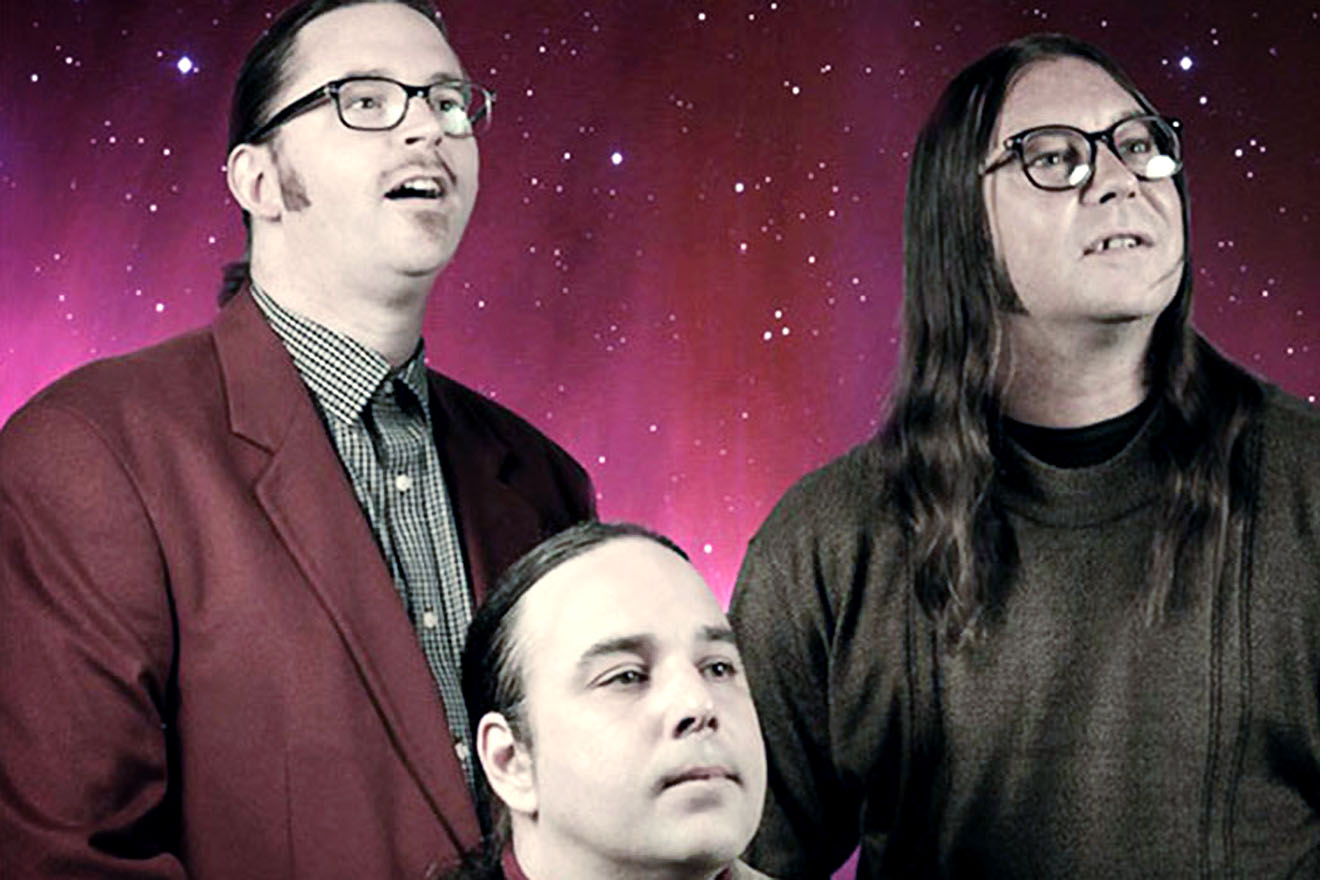
That’s one of the things I like most about your music. I can appreciate it on an aesthetic, head-banging level, or I can dig into it, learn about the esoteric shit, and appreciate the ideas you explore that a lot of people might call “fringe.”
Most of them don’t talk about this stuff because most of them don’t believe it. They are all watching TV on their cell phones, and that’s all they do. They don’t fucking read anymore, unless it’s on their fucking cell phone. They don’t pay attention to anything unless it’s Hillary Clinton or Trump. They don’t fucking think. And if they do think, they’re thinking about the next lollipop they can get with the next buck that they make. Mankind is on a spiritual downward spiral that has been going on for the last 40 or so years. I think about the 1970s to now, and it’s gotten just dramatically intensified. Is humanity going to exist and coexist in this universe, or are we just gonna let ourselves keep burning on fire like we’re doing?
I don’t mean to be like that… because we have a choice.
People are taught to be complacent or think the woes of society don’t matter because they don’t directly affect them. We’re sort of conditioned to live in a delusion and accept it.
Yeah, that’s what they taught you in school. Or the American Dream, whichever one you want to buy, whatever bullshit thing you’re buying. There are a few things in the world that I fucking do love though, dude. I love fucking guitar. I’m sorry, but this is Penthouse — I really like butts [laughs]. I like yoga pants and bikinis. I like weed! I love my car, which is swampy because I haven’t been home in months. It’s a beautiful car, but it needs to be fucking cleaned. It’s a ’78 El Camino, but it’s got a 383 Stroker and is 500-plus horsepower. It’s fucking badass. It’s not the year I would have chosen, but it had the motor in it, which is worth more than that fucking car. The car is beautiful, too. It has a perfect interior, great paint job. It took me a long time to earn. I bought myself something nice, after enduring all the times I’ve eaten shit for this job. But I love what I do.
“Mankind is on a spiritual downward spiral that has been going on for the last 40 or so years. I think about the 1970s to now, and it’s gotten just dramatically intensified. Is humanity going to exist and coexist in this universe, or are we just gonna let ourselves keep burning on fire like we’re doing?”
I also like freedom of speech. What do Penthouse and Slayer have in common? The First Amendment. You can’t fucking call hate speech on someone because they have an opinion! Fuck you if I don’t like you and I want to say “fuck you.” If I don’t hurt you physically and I’m not a threat, you don’t have the fucking right to tell me what to fucking say. That’s what this whole new fucking fight is about. We have freedom of speech so people can talk their fucking bullshit. But it’s like the vegan wearing leather. Don’t talk your shit if you’re not going to walk your walk. And I know why that generation is pissed off: It’s because your parents were fucking yuppies and they suck. They’re the reason that it’s too expensive to afford a house. I’m not on the side of Trump, either. He’s a distraction — that’s what I believe.
So you’re frustrated with both the left and the right. What about some modern political groups, like the Democratic Socialists of America?
I don’t support socialism, but I agree with socialism sometimes. I mean, I love Scandinavia. Socialism is great there because if you’re in a band, you get paid or even funded. I’d love to have something like that, or universal health care that doesn’t fuck you. American health care fucked me.
I’m fucking pissed about that because I worked really hard to be who I am and do what I did.
On top of digging ditches or driving a fucking tow truck, I went to band practice after work, and I slept like one day a week — for years! I’m not against a left person or a right person, I am against the fact that no one will take responsibility for themselves and they blame it on their personal fucking pocket Jesus… which is your cell phone or computer. Social media is the worst thing that ever happened to man, aside from the fact that once in a while someone tells the truth on it. But even then, it leads to them getting attacked and shut down.
To me, the best part of social media is that new audiences can get introduced to culture they might otherwise be unable to find. Like, there’s a new generation of Sleep fans who probably found out about the band through the internet and social media. But yes, the vast amount of American culture’s relationship with social media is fucking sinister.
I agree with that. I would like this interview to strike something in the hearts of all the left and all the right, and all the people who don’t even want anything to do with all this shit. I’m telling you this is the point: They are separating us and it’s the fucking TV, and this social media bullshit. Turn your fucking TV off and throw it in the hall. Turn your cell phone off and fucking make a friend without knowing if they support the left or right. Then there is no narrative. You’re on neutral fucking ground. There’s no fucking anarchy flags, no American flag, there’s no flag they’re flying anywhere. And when you get a grip on all that, then we’re going to get somewhere. Then, shit, maybe Matt Pike for president?
Hell yeah. President Pike.
Yeah, well, I don’t know if I’d ever want that job. The minute you get it, whether you did anything or not, they shut you down in one way or another. They point a finger at you out of a narrative… if one side likes you or the other, CNN or FOX will inevitably attack you. If I were president, I would just make everybody fucking meditate. I’m not a narcissist or egotist, this is just a hypothetical [laughs]. I do think if everyone shut off their electronics, they might know what north and south are. It’s like fuck, dude…
What’s your connection to Albert Pike? I know he was an infamous Freemason, but you told me to look him up.
It’s horrifying, but yeah, as far as I’ve done research, I’m very much related to that guy.
Are you a Freemason?
Nope. I actually have been approached, and it’s nothing against the Freemasons or anybody else. I’m a one-man gang, or my gang consists of my crew and my bands. So I really don’t need any sort of narrative. I don’t need any sort of higher-up.
I’m an anarchist that enjoys his gun rights, and that’s who I am.
When you’re digging through arcane history and looking up esoteric stuff, how do you find it? Are you looking online? Are you taking out books?
Sometimes it’s from books. There are certain lectures I like, including ones from people like Michael Tsarion, even though I don’t agree with everything he says. He’s really well-read. David Icke turned me on to the Reptilians and all that kind of stuff. I think he turned a lot of people on to that. There’s David Wilcock and Ancient Aliens. I’ve been to Peru, so I fucking know for a fact that mankind — some guy with a fucking knife made out of stone — didn’t make the shit that’s there. There were giants walking around, and I know that for a fact. And the same thing with the Sphinx. How come you can measure around the pyramid [in meters], and up and down it, and it is exactly the speed of light, 186,000 miles-per-second? Why is that? What is that sacred mathematics there?
If mankind is egotistical enough to think that we are the only ones who’ve ever been here, you’re fucking fooling yourself. At the end of the day, really, we all should just be hunter-gatherers and go back to the fucking Dark Ages because we’re being separated [laughs].
I’m not trying to get all conspiracy theorist, I just know that the world is full of fucking shit. I’m not saying this place is all bad. After all, I’m in Penthouse, and it’s full of a lot of fun, a lot of good music, a lot of hot girls, a lot of cool people. You know, I love my fast car, I love my guns, I love my dog, I love my girlfriend. I love a lot of things about the world. If we try hard, it might not fucking fall apart. But it’s not looking good because people just get dumber instead of smarter — and that’s by design. That’s what I’m saying. Fucking shoot your TV. I know cell phones are necessary, but… They gave cell phones to everybody knowing humanity would become that much more stupid. It’s by design, dude. If they turn off the electricity, now they have all the power. If they turn off the fucking electricity, I want to see how many fucking DIY people that want to be politically correct know which direction to walk to find fucking water. What will you do to start a fire, dude? I want to know what you’re going to do when they take that all away from you.
Society feels bleak right now. At the same time, you and I haven’t jumped off a bridge yet. What could we do to change things? Are there any solutions to this bullshit?
Unfortunately, the only thing that teaches people who have fucking ego problems a lesson is consequences… and it’s going to be too late. Finding things in spirituality like forgiveness, kindness, goodness can help. Instead of having an attack on someone’s self-esteem, you build them up, and you try to make them see your point of view by being intelligent and by making choices that help humanity. Or you can be a selfish little prick and just go with a bunch of other selfish little pricks that really don’t care if anybody’s hurt or anybody feels any bit different about anything.
We’ve been taught to be a complacent, sad species. We are fucking sad. We are not the apex predator we were. Dude, I could take a hundred kids out of school and not one of them would know how to hunt or kill their own food. They will eat at fucking Burger King or McDonald’s all day, but not one of them would know how to survive ten minutes. Me, personally, I’ll be eating all your fucking legs and asses. I’m telling you, cannibalism is the way to the future [laughs]. That was a hypothetical, but the people who are going to survive are going to be cannibals. The people who are going to survive are going to be gangsters with all the guns that have pirate rules. But the New World Order is not the way to do this.
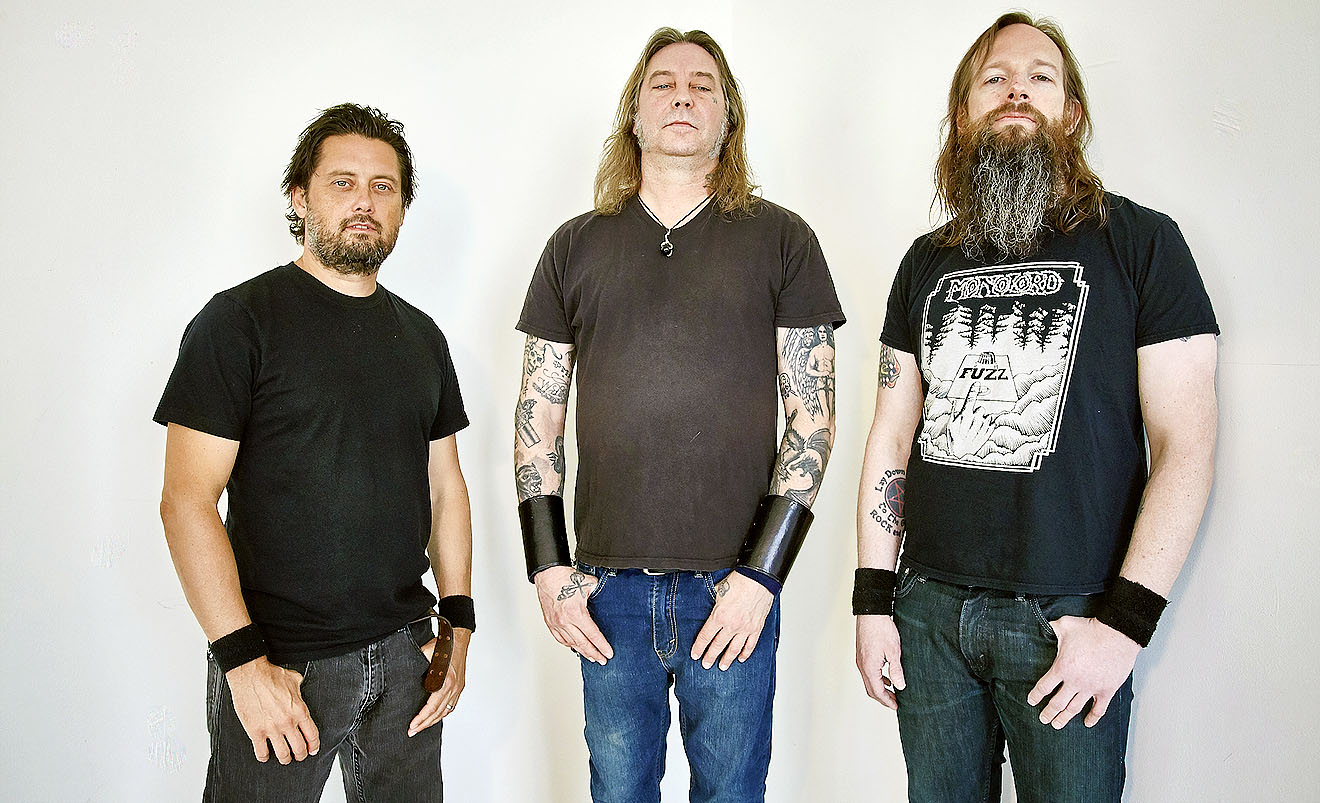
I know you’re a gun enthusiast and always have been. I remember reading an old interview where you detailed your mighty collection at the time. Has it grown since?
Oh yeah. I just got a CZ Scorpion with the new laser sight. It’s a nine-millimeter semiautomatic pistol, but kind of like an Uzi or submachine gun. I can make smiley faces on targets from like 60 yards. CZ is a great company. I have another Sub-2000 which is a Kel-Tec. I’m going to keep kind of quiet about the rest of my gun collection because if they come for ’em they’re not going to know what to look for. I’ll have a stash, somewhere.
So I have a Sleep question. From the beginning, the band had a big relationship with weed. Do you still smoke pot?
Actually, now that I live in Oregon and recreational marijuana is available, I’ll smoke weed once in a while. Like, I did bong hits with Al while we were writing during the last little session working on The Sciences. I hadn’t done a bong hit in like five years. We were in Albuquerque, and it’s not like there’s traffic, but I had a hard time getting from his house to my hotel right up the street. I was so high. Oh God, dude.
Now, I buy gummies. I guess I consume edibles more than I actually smoke. Every once in a while, we’ll be in Europe or something, and my guitar tech and sound man, Chad Hartgrave, will get me to smoke so I go to bed and don’t go out and fuck up and party and do all that stuff. He’ll make me smoke a joint with him, even if it’s just hash and tobacco. It knocks me out and makes me go to bed.
What are Sleep fans like today?
Multiplied [laughs]. I see a lot of younger people at our shows, and I think their parents were probably into us. I’m kind of an old dude. I’m 46 — not even close to a millennial.
I’m obsessed with all the mythology around Sleep and the recording of Dopesmoker. I know you’ve said the rumor about the band spending its entire advance from London Records on weed is exaggerated. At the same time, the album was recorded in Mendocino, California, and you must have had access to great pot.
Dude, it’s so different today. There used to be weed that had seeds in it. They don’t do that anymore. Anyway, yes, we were in Northern California, which was definitely a great place to find some good fucking weed. That’s where most of it was coming from. Hippies with guns were scary back then, though.
How much weed you were smoking during those recording sessions?
I don’t know exactly, but we each had at least a pillowcase’s worth at all times. We even made a fucking chalice out of the sink. We turned it into the biggest bong ever, using duct tape, some surgical tubes, and a kludgy mouthpiece we fired. We’d fill the sink with water and tape it off, so it was kind of like a gravity bong, but way fucking bigger. I think Al was the only one that actually got the thing to hit. I don’t think anyone else had the lung power, but Al’s got special DNA for shit like that.
Over the entire recording of Dopesmoker, how much pot do you think you consumed?
It was something like three to six ounces a day for two months. Yeah, it got to the point where I got so sick of just smoking it that instead I would just grind it up in a coffeemaker and throw it in spaghetti and make everybody eat that. Then we’d be, like, drooling, and you’d forget your name and address. It was a lot of weed [laughs].
Sleep released its long-awaited fourth album this year. Now that The Sciences is finally out, are you and Al still digging through the riff vault? What’s the current status of the band?
Well, we’re just treating Sleep how we treat Sleep. We’re just trying to get together and write and have some fun with it and do some shows. We don’t like to be too agenda-filled. We’re pretty casual about it until we’re done with something or have an album’s worth of music ready.
I’ve always appreciated that you’re in two very different bands, but both are so fucking good.
I appreciate it, too. It’s apples and oranges. I’m glad I have both apples and oranges because I have two kinds of juice. And now High on Fire has a new album called Electric Messiah. We just released the eponymous single. The record is like an anarchy-Sumerian rock opera. I had a dream about Lemmy Kilmister after he died. People have told me I’m the American Lemmy, even before he passed, and it always bugged me. I can’t touch that man. I used to tell people, “Dude, I am not fucking nowhere near Lemmy. I might have a raspy voice, and I might play similar music, and Motörhead is an influence on us, but I’m not fucking Lemmy Kilmister — no one is.”
“I love my fast car, I love my guns, I love my dog, I love my girlfriend. I love a lot of things about the world. If we try hard, it might not fucking fall apart. But it’s not looking good because people just get dumber instead of smarter… They gave cell phones to everybody knowing humanity would become that much more stupid. it’s by design, dude.”
And I guess that’s what the dream was essentially about: Lemmy got hella mad at me. Dude was pissed. In the dream, I felt guilty or that he would scold me or something. I had been writing a tune with Des [Kensel, drummer], and I started singing about the weird fucking dream. I ended up writing a bunch of lyrics that I thought Lemmy would sing, while approaching it like an homage to Lemmy. I got to go on tour with him, I got to interview him. I knew him a little. He was one of the biggest deals to rock and one of the last of his kind. So the single “Electric Messiah” is our ode because Jeff [Matz, bassist] and Des love him just as much as I did. I wasn’t trying to jump all over a poser bandwagon or something. It’s just a tribute to Lemmy, but it’s a great album title as well, so we stuck with it.
At one point, I wanted to call it Insect Workout With Lemmy [laughs], but Des convinced me to go with Electric Messiah, and we think it’s badass.
Can you tell me about the album art for Electric Messiah?
Oh yes, Skinner did it! I’ve been friends with Skinner for a long time. We all have. He’s an amazing dude. I met him quite a few years ago, at one of his art shows, and I was just blown away. For the album art, I talked to Skinner on the phone for a while, and told him what I was thinking about — the legend of the Nephilim and the Anunnaki giants waking up after they’ve been cryogenically frozen under earth. The Nephilim are half-Anunnaki, and were supposedly the people who first created our civilizations.
Are they the ones who built Machu Picchu?
I believe so. They were spread out all over the Earth. So were the Pleiadians. If I go into that fucking thing, I’ll be on the phone with you for another six hours. Anyway, the cover relates to the Nephilim giants, who used to be the kings of Earth, waking up from their underground tombs and usurping their thrones and slaying mankind. A lot of people have this hypothesis that that’s going to happen.
Basically, I took all Sumerian cuneiform tablet stories and put themes from them into the first block of the new album, as if it were my own weird little book report. I’m very versed in this stuff. I study and research a lot of crazy shit like that.
So you’re saying the album’s lyrics reflect ideas related to this mythology, too?
Yeah, most of it. There are other [songs] about cryptids, and witches, and “God of the Godless” is about artificial intelligence. “Freebooters” is about Sir John Dee and England’s colonization conspiracy with the pirates. The album is full of all the weird tales that I know.
But I’m not fucking telling you this is or this isn’t. It’s just shit I think about. What’s more metal than half-fantasy, half-mythology? It all came from somewhere true. I sing about the Reptilians on occasion. I listen to a lot of people who they call “conspiracists,” but dude, they have the best metal lyrics [inspiration-wise]. My personal beliefs, you can take or leave. I believe a lot of crazy shit. You know what’s cool about this album? It’s a fun album. It’s not as doom-y [laughs].
Any other thoughts you want to add for Penthouse readers?
Yeah. Stop listening to the media and go to more fucking shows. Fucking seriously. Doomsday’s coming too fast to not enjoy what you’ve got.





